SPOILER ALERT: The following post contains frank discussion and plot points from both Batman: The Killing Joke and this week’s Batgirl #47.
As a writer, it’s no easy task to be told that the Joker is going to come to come over to Barbara Gordon’s apartment and not leave until he gets what he wants from her. But when you write comics, missives come down to you all the time and your job is to go with the flow. It’s always a great and interesting challenge to try to contribute to the larger shared universe narrative while also pushing the character that you are caring for forward. The aim is always to contribute to the canon of the character while finding the balance between honoring the core of who that person is and what came before in their story.
So, the question for me with my piece of the “Joker War” puzzle was how to not fall into the same trap that has shadowed Batgirl: the legacy of Moore and Bolland’s The Killing Joke. In that controversial book, it posits that the Joker was just a man wanting to do the right thing, but one bad day drove him to become insane. In The Killing Joke, Joker turned forever from being a bit of a silly villain into a dark one, and he took Barbara Gordon into the darkness with him. The ripple effect of that book is a life altering moment for Batgirl.
Now they seem to be ever entwined in a danse macabre about that one bad day for Barbara.
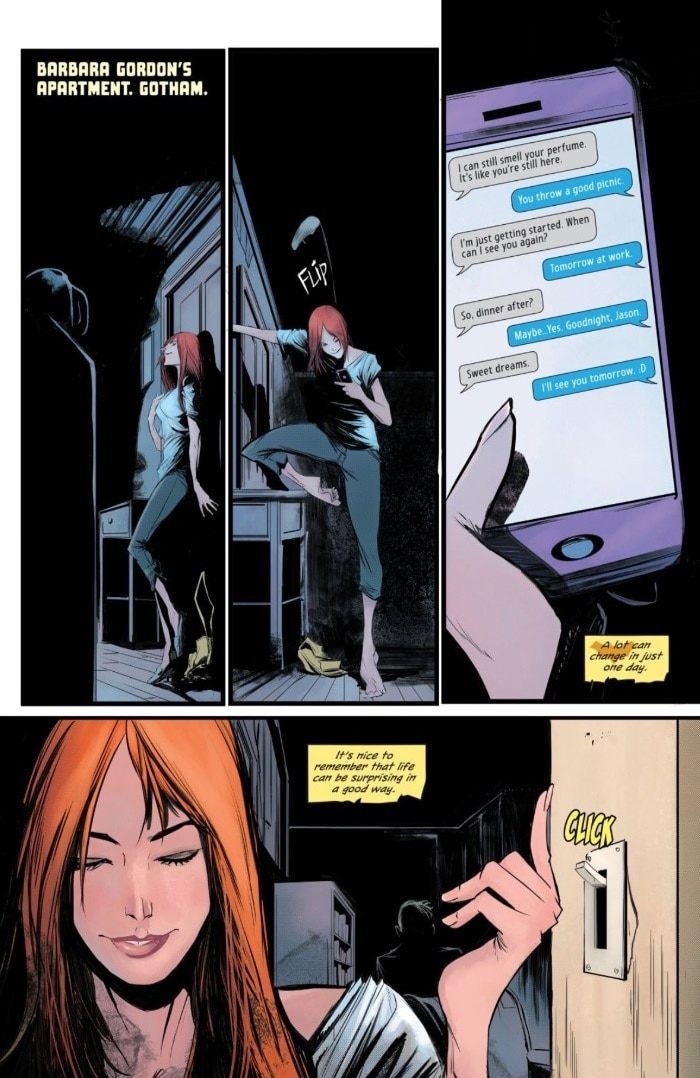
The moment that the Joker shoots Barbara and then sends naked pictures of her in clear pain to a bound and leashed Jim Gordon is burned into the brain of everyone who has read it even these 32 years later. It’s still a moment that people talk about. One horrible moment that seems to last forever and a moment that Batgirl never seems to be able to own for herself. In one fell swoop, the Joker altered the course of Batgirl’s trajectory as a hero.
Over and over again, that moment in The Killing Joke is used to torture Batgirl, to force her to relive her trauma and is often used as a plot device by (let’s face it, mostly male) creators to further the service of their story, not Batgirl’s or Barbara’s. Because the bummer is that traumatic moment was in service of moving the story ahead for other male characters—Jim Gordon, the Joker and Batman.
And quite frankly, I think Barbara has had enough.
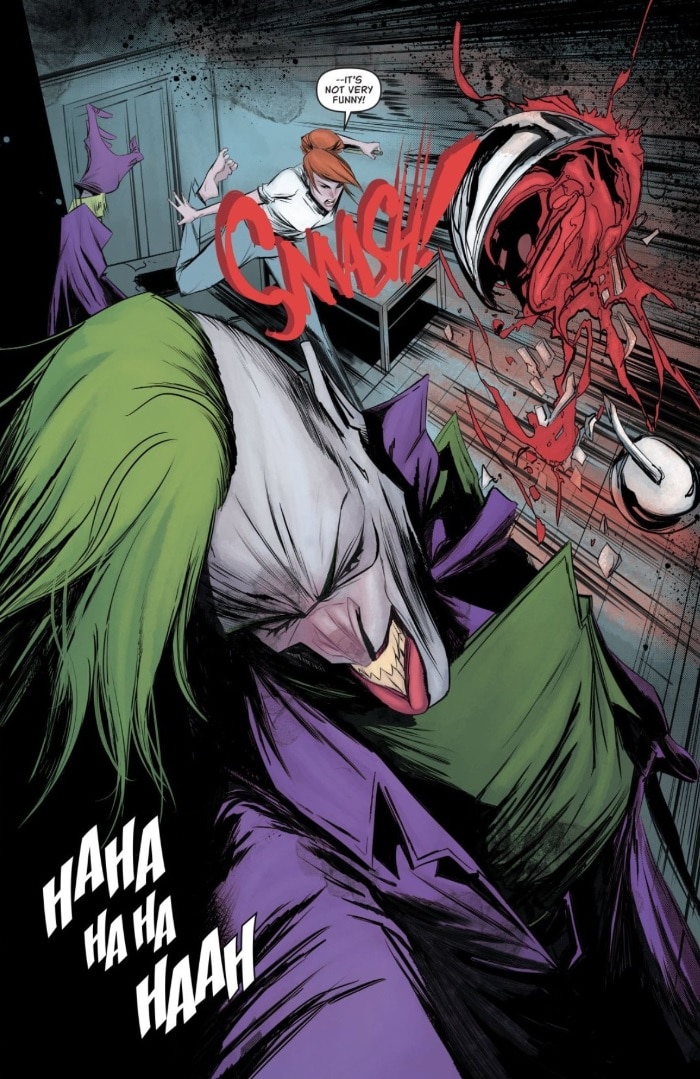
So, in Batgirl #47, I really wanted to address what we know about Barbara Gordon/Batgirl and dig into how she might really, after all this time, confront the Joker if he were to knock on her door again. The first thing I did was to have a long deep conversation with my wonderful editor Jessica Chen. Jessica and I both agreed on and were determined to make clear that Barbara was not going to be the victim this time in the face of the Joker. Of course, he still scares her and things could go very badly for both her and Gotham. But this time she was going to confront this trauma. She was going to face it with the savvy that we know her character has. This time she was going to have agency in her own story. This encounter with the Joker was going to serve Batgirl’s narrative. Not Joker’s. Not Batman’s. Not Gotham’s. Batgirl’s.
After Jess and I had our talk, we looped in artist Robbi Rodriguez. One thing that Robbi and I agreed that we wanted to do was to echo The Killing Joke in terms of visuals, so that we’d use some of the motifs from that comic, but center things on Barbara and switch the POV to her. We wanted her to be the one that’s telling the story. I think it’s effective and that Robbi really brought a lot of pathos to the page. This had to be a story about a person facing their demons and diminishing their power a little bit—to fight back against them. To finally be able to claim your own story after being silenced by it for so long. To find your voice in the telling of it.
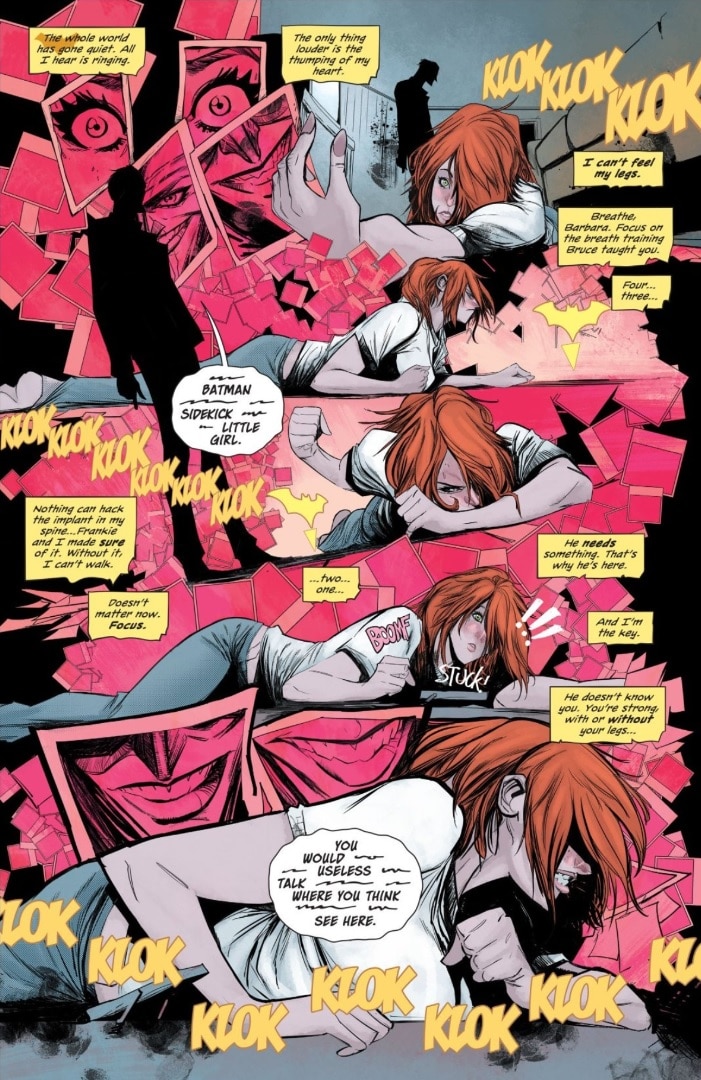
Think about it. There is no one in the Bat-Family like Barbara Gordon. She is a thoughtful, empathetic, brilliant and resilient woman. When she faced the aftermath of what the Joker had done to her by shooting and paralyzing her, she processed it and then asked herself, how can I still be a hero? What are my skills? What can I offer? What do I know? That is who Barbara is. We’ve seen how Barbara prepares. She loves homework! She is a hero no matter what you throw at her.
Which is why it was time to have her turn the tables on the Joker.
In this issue of Batgirl, there is no Batgirl. It’s Barbara-centric because Batgirl is a mask that Barbara, the true hero, wears. Since I knew that the issue was going to be taking place at her house, we wanted to show how Barbara is ready not only for him, but for any contingency. One of the conceits of “The Joker War” is that the Joker knows the secret identities of all of the Bat-Family. So. there was no need to make it separate or to contrive to find a way for her to protect her identity. He knows who she is, and the Joker thinks that he has the upper hand over her because of their complicated history. Of course, that’s where he’s wrong.
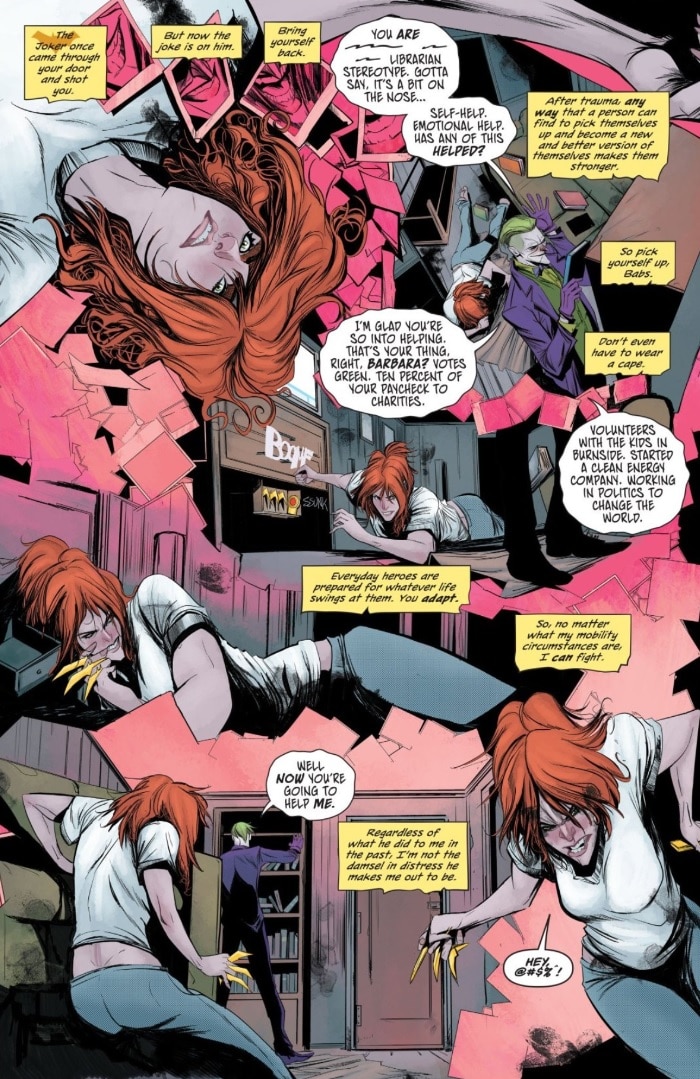
The thing about Barbara Gordon’s implant is that it could be construed as an Achilles heel and is often mishandled. Or even worse, it gets thought of in an ableist way. But we know that Babs understands that the time with her implant is limited at best. She knows that at any moment it can fritz out. It has before and it will again. And you can damn well believe that she is ready for that. In addition, trauma and being triggered by trauma can render you unable to move. I believe that she has mentally prepared for that fact as well.
In the overall picture, Joker is always interested in control. So, in this issue, using his newly acquired gizmos from Wayne Enterprises, he decides that the best way to get what he wants from Barbara is to control her body. Controlling it by shattering her spine has worked before, and in a way his attempt at control here mirrors what so many men attempt to do in society—exert control over women’s bodies. Joker thinks that he has advantage over her when he uses his device to make her a puppet, but his plan is flawed because he’s thinking in a linear way.
Barbara doesn’t think in a linear way. She can see the whole picture in a flash, and she doesn’t need her ability to walk to defeat him. Barbara knows how to fight from the ground. Her cognitive memory and muscle memory are flawless. Her world has been expanded by her time in the chair, her time as Oracle, her time fighting the Oracle robot. Her eidetic memory has allowed her to amass loads of information and assess best practices in any situation, even if she is prone.
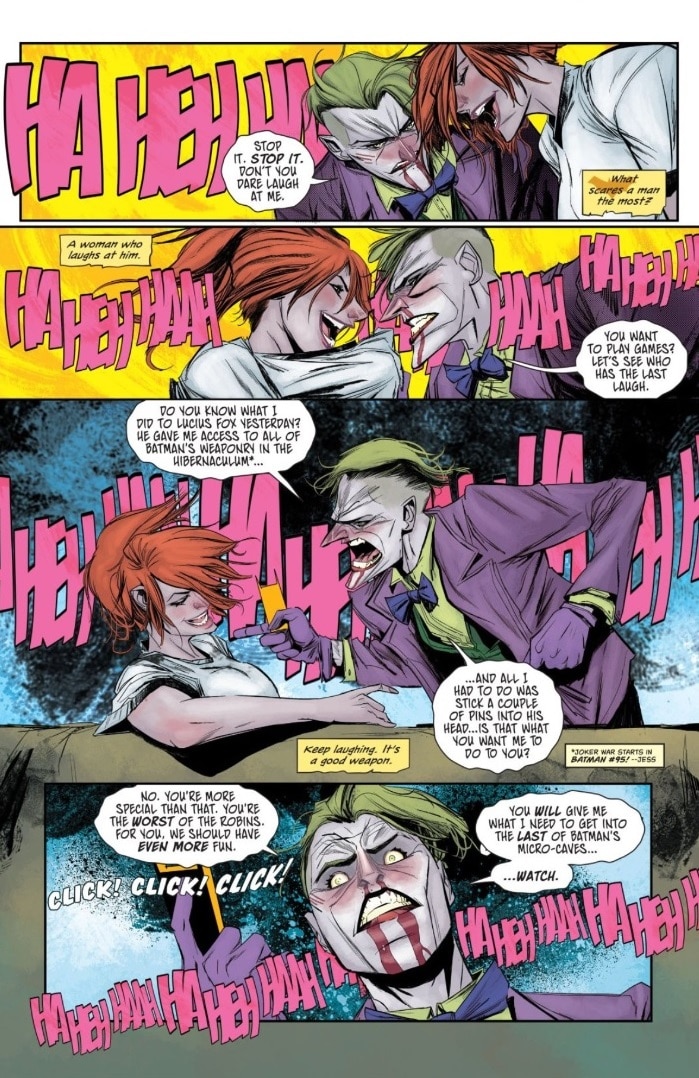
But in order to really shift the dynamic here, I knew that I needed to have Barbara use the weapon that the Joker is best known for: Laughter.
The Joker uses laughter as a weapon to throw everyone off balance. It’s all a joke to him. Cold-blooded killing. Torture. Revenge. Nothing has any meaning.
But we also know that the thing that strikes to the core of an insecure man is laughter. And women know that the thing a man fears most is being laughed at. So here, we have Barbara turn the Joker’s most dastardly weapon onto him. She pulls out her own implant to regain advantage with her own body. And then she laughs at him.
It’s my hope, that by facing the Joker head on and reclaiming her power, Barbara Gordon finally gets the last laugh.
Batgirl #47, a "Joker War" tie-in issue by Cecil Castellucci, Robbi Rodriguez and Jordie Bellaire, is now available in print and as a digital comic.
Cecil Castellucci is the Eisner nominated and New York Times bestselling writer of Batgirl, Female Furies, Shade the Changing Girl, Plain Janes and much more. Be sure to follow her on Twitter at @misscecil.




















